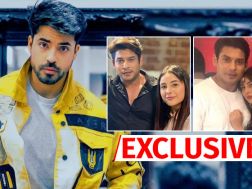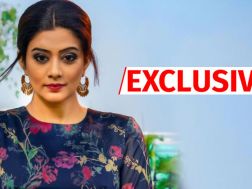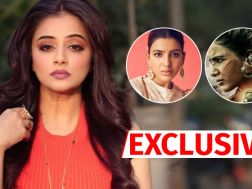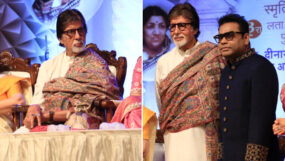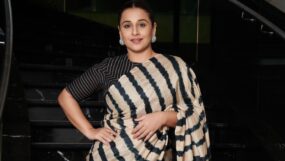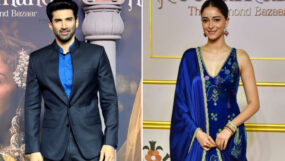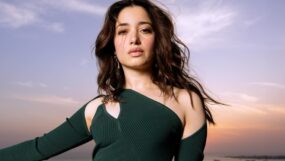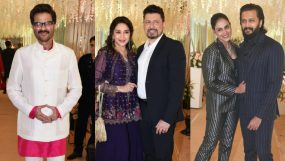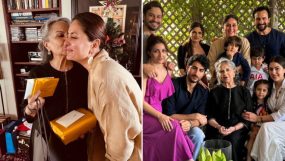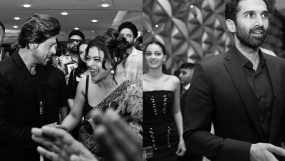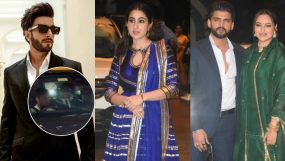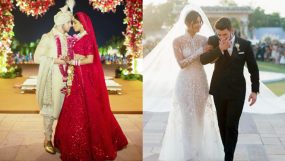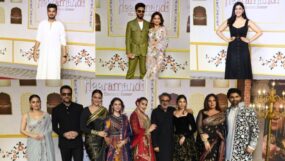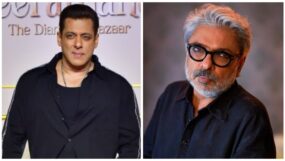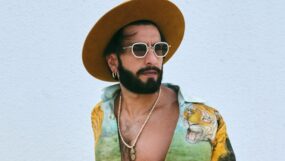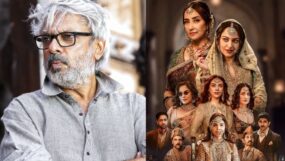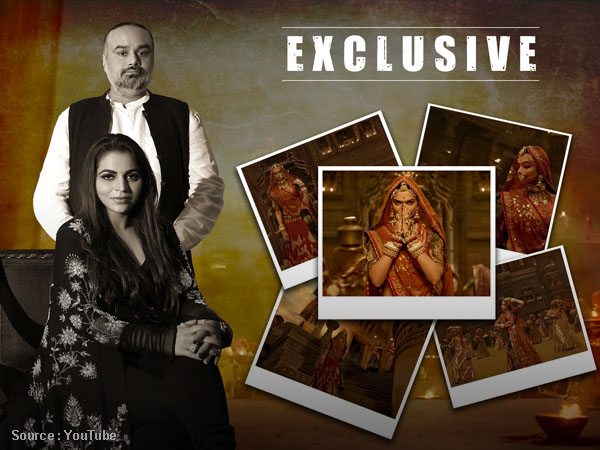
Sanjay Leela Bhansali’s ‘Padmavati’ has surely been made on a grand scale. The sets of the film are magnificent and the outfits worn by the actors have royalty written all over it. Recently, we interacted with the costume designers of the film, Rimple and Harpreet Narula.
While talking to us they revealed a lot of things like the weight of Deepika Padukone’s outfit in ‘Ghoomar’, how was it working with SLB, and many other things. The two also revealed that all the three actors, Deepika Padukone, Shahid Kapoor and Ranveer Singh are truly dedicated to their craft.
Read out our whole interaction with them here:
When was the first time Mr Bhansali approached you for the period drama called ‘Padmavati’?
We got a call from his office for an initial meeting, probably because our collections have always been research based, digging into the vast archive that is found in our cultural and textile heritage and reinterpreting centuries old techniques. In fact our last two collections- ‘The Eternal Wanderlust’ was based on the nomadic tribes and drifters of the North West Frontier Province while ‘Maharadjah & Co.’ was based on the erstwhile Indian rulers of the Raj-era and along with our other past work with various Royal families and ‘Padmavati’ too deals with 14th century India. So, instead of taking our existing work we did some research on Rani Padmavati and pulled out various old textiles from our personal collection which we thought would make interesting points of reference. The whole meeting went off quite well with some impromptu look tests using those textiles we did with Mr Bhansali and during the course of the meeting it became apparent that we were in sync with his vision and what he was looking for in terms of costumes.
What was the initial brief given to both of you to design the costumes of ‘Padmavati’?
During the initial stages of the project, Mr Bhansali and his team took us through the script in order to understand the flow of the narrative and nuances of each character as the garments have to enhance the same. He made us understand that his characters and their entangled destinies are the main heroes and the garments should not be mere beautiful clothes that they don, but should in fact bring out inherent attributes of their natures as well as the emotional journeys they undergo through the course of the storyline. The clothes have to imbibe all that and more so as to set the main protagonists apart in the eyes of the audience. The clothes have to be in sync with the characters’ moods as well as the overall flow of the narrative, bringing out underlying emotions as well the intricate nature of the characters and the plot, so the colour palette, fabrics, surface ornamentation all had to be worked out accordingly.

Sanjay Leela Bhansali is known for his perfection. Did you guys feel any pressure to design for an SLB movie?
Since it is a period piece, we had to be extra careful when it comes to maintaining the authenticity of the costumes using only organic fabrics such as cotton and muls as well as surface ornamentation techniques that were prevalent in the period. Given the scale of production, elaborate detailing and wear-tear during intense sequences such as the battle scenes, we had to come up with replicas of almost all the looks which in itself was quite challenging since we have used actual antique textiles mixed with newer fabrics and getting back-ups of the same was quite the task. Mr Bhansali has been very hands on in his approach, guiding us through history books, what looks he wants for each of his characters, how the garments are supposed to bring out their inherent natures and emotions and we are working in sync with his vision so as to bring to life the same in a way that each character leaves an indelible mark on the minds of the audience. The pressure to give him our best is always there but at the same time the entire process is very inspiring to us as designers. To live up to Mr Bhansali’s grandiose vision can be daunting at times but the creative synergy we share with him makes us want to put in our very best.
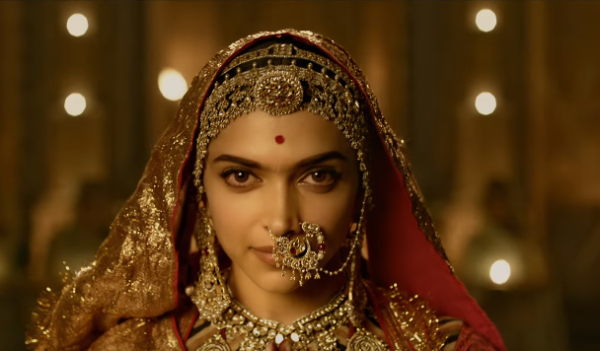
Take us through the research process before you actually got down to sketching clothes for Deepika?
The Calico Museum in Ahmedabad, the Jaipur museum, Victoria & Albert museum were a source of great inspiration and study when it came to the old textiles that were prevalent in the region. During the initial research phase, our team visited various clusters to study the traditional embroideries such as mukke ka kaam which is an example of very fine intricate embroidery done by couching gold and silver metal threads over the base fabric. Golden mukke ka kaam used along with red thread edging is known as Raato while silver mukke ka kaam with blue thread edging is called Dhaulo. For the ornate court looks for Deepika we tried to achieve a vintage aged effect by mixing both Raato and Dhaulo. The vintage textiles we sourced and the replicas we created after careful study, were then ornamented with these traditional embroideries including mukke ka kaam, pakko bharat, salma and sitara, silk floss thread work using traditional embroidery stitches in Jaipur and Lucknow; and rendered onto the elaborate odhnas and ghaghras befitting the queen of Chittor. We had to maintain the look and feel of both the province and the period.

How was it working with Deepika, Shahid and Ranveer?
Deepika is a dream to work with. She is extremely disciplined when it comes to her craft and willing to go to great lengths to get under the skin of the character. Deepika, Shahid and Ranveer are truly dedicated to their craft and the moment they don a costume they leave behind the actor but become the character, imbibing Mr Bhansali’s vision.

We have got a glimpse of Deepika’s attire through trailers and songs, which one is your favourite and why?
Interestingly, we asked Mr Bhansali during the initial script readings which outfit would he consider the most important and iconic and all he said to us was that between the three main characters we would need to come up with over a hundred plus looks and that each look has to be equally important as it would define that particular moment of the story line, so we had to give our best to each.
How heavy is the Ghoomar lehenga?
It took several look tests to get the look and weight of the outfit right and Deepika was a complete sport throughout the process. It was very important that the ghagra has the right fall and balance as the Ghoomar steps are quite intricate. We tried to keep the weight as minimal as possible by using organic cotton fabric that was ornamented with light weight zardozi and kachi-patti embroidery. The odhna was created by layering varq ka kaam over a hand printed leheriya pattern in order to make it look rich and regal yet keep the weight in check. During the rehearsals we were astounded by the ease Deepika picked up the steps so perfectly and performed each one with such ease from one impeccable frame into another, how gracefully she carried such a rich and ornate ghaghra during the numerous twirls that were a part of the complex choreography. The entire costume weighed around 15-20 kgs when worn but she carried it off with great aplomb.
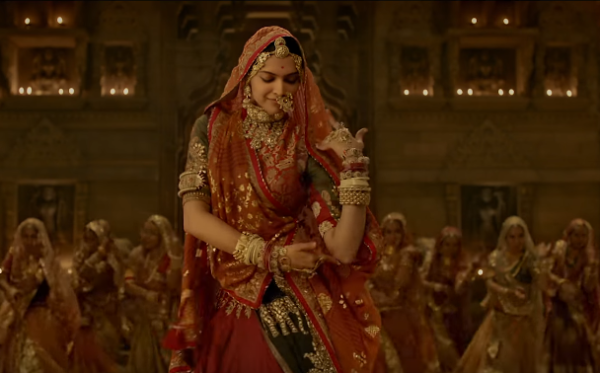
How difficult it is to design for a period film?
Since it is a period piece, we had to be extra careful when it comes to maintaining the authenticity of the costumes for it is an extremely challenging task to envision and design garments as they were worn by the royals back then as not much is documented of the same. Keeping that in mind we have done intensive research on the period by way of going through old travellers’ accounts from that era as well as regular visits to the Calico and Jaipur museums to get the touch-feel-look right. Most of the actual samples of antique textiles and costumes from that period are dispersed all over the world in various museums and archives so our love for travel and museums also came in handy when we had to collate all the information required during the research process. Even then, actual living samples of such textiles are far and few in between so we had to refer to a lot of miniature paintings, murals and frescoes to get the nuances of the styling as close to how they used to be.
‘Eat Sleep Bollywood Repeat’ is his life Mantra. Dance is his first love and Rani Mukerji is his eternal crush. He is someone who loves being himself, and as for the ones who don’t agree, his reply? “Talk to my hand!”



